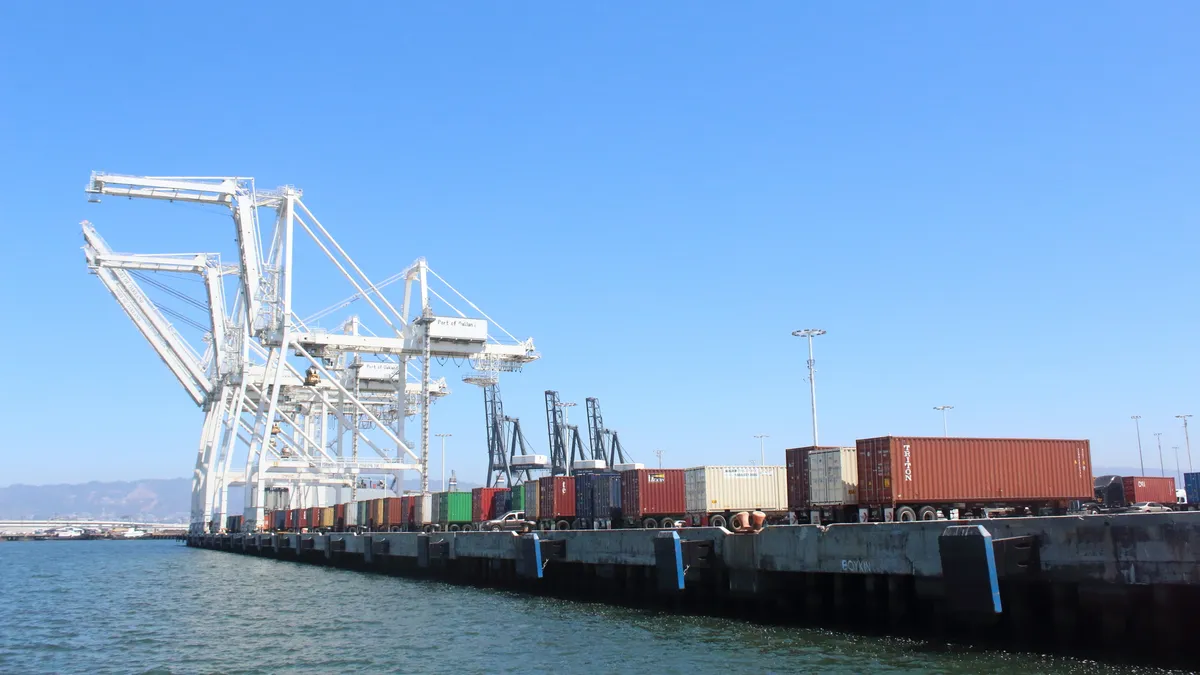Dive Brief:
- U.S. ports this month are expected to see their lowest import numbers since about a year ago, as trade hits its annual slowdown between peak seasons and the tariff hike is on hold, according to the National Retail Federation and Hackett Associates.
- 1.89 million TEUs came through U.S. ports in January, the latest month numbers are available. This was down 3.7% from the previous month, but up 7.4% year-over-year.
- NRF and Hackett are forecasting 1.59 million TEUs will flow through ports in March. This is up 3.2% year-over-year, but marks the lowest level of imports since last April.
Dive Insight:
Data analysis is an important foundational approach to the integrated supply chain. The data from the National Retail Federation provide key insights into the retail supply chain that will help inform critical business decisions, especially as we move into a global economic slowdown and potential recession.
The overlying cyclicality and seasonality of retail merchandise, coupled with quickly changing consumer tastes, is forcing supply chain managers to work with suppliers and logistics providers to shorten product development and manufacturing times and tighten logistical operations.
Changes in customer demand, driving change in sales and operations planning, will continue to flatten out those seasonal amplifications as supply and demand continue to align.
The politics of U.S. tariffs on imports from China, and China’s retaliatory approach, have created economic uncertainty with increased costs, changes in suppliers, additional risk and indecision in the planning and execution in all levels of the supply chain.
It looks now the trade war with China will end with a whimper in the next month or so, causing parties on all sides to lick their wounds and move on. The next politically motivated trade war may be met with less seriousness and a delayed reaction.
The trilateral intersection of economics, politics and seasonally-driven product life cycles are a perfect example of the integrated retail supply chain.
Supply chain managers need to focus on underlying data and trends impacting their business and extended supply chain. The single dimensional supply chain manager, one with a myopic view of their work world, needs to expand their horizons to look at the dynamic business issues impacting their organizations, customers and suppliers. Only then can they provide effective leadership, advice and counsel to their companies.













